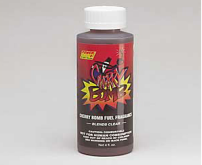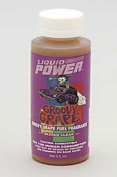Joining Trans-Pacific Partnership (TPP) Agreement, one of the major challenges to Vietnam is standards for Intellectual Property. So far, although Vietnam has signed the TPP Agreement, there are still many ideas and discussions on the implementation of the provisions of Intellectual Property to conform with the Intellectual Property’s regulations of TPP.
One of the ideas and discussions on the provisions of Intellectual Property when joining the TPP Agreement is to expand the scope of protection of trademark registration. In particulars, trademark protection has been allowed for not only visible signs such as letters, words, pictures, images, including holograms or a combination of such elements, which are represented by one or more colors (hereinafter referred to as "Traditional marks"), but also sound marks and scent marks (hereinafter referred to as "Non-traditional marks"). Because in Vietnam, up to now, there is no regulation in relation with examination and registration of Non-traditional marks, this article refers to the examination and registration of Non-traditional marks under the provisions of the United States Patent and Trademark Office (hereinafter referred to as “USPTO”) as a view of the Non-traditional marks.
In accordance with U.S. Federal Trademark Law, Non-traditional marks include (i) color, (ii) holograms, (iii) motion, (iv) position, (v) sound, (vi) scent & (vii) touch. However, because terms of the TPP Agreement just referred to sound marks and scent marks, the article, accordingly, mentions on these two types of Non-traditional marks.
When an applicant applies to register a Non-traditional sign such as sound or scent, the trademark examiner must consider two separate issues:
FUNCTIONALITY: Is the mark as a whole, functional? If the mark is functional, it can never be registered as a trademark.
The U.S. Supreme Court has held that a feature of a proposed mark is functional if it is “essential to the use or purpose of the product or if it affects the cost or quality of the product.”
Factors to determine functionality:
- Utility patent?
- Advertising – utilitarian advantages?
- Alternative designs available?
- Simple or Cheaper Method of Manufacture?
Not all the factors need to be present for determination that the feature is functional for the goods, namely it depends on each case whether some or all the factors exist.
DISTINCTIVESS: If the sign is not functional, is it distinctive? In particulars the sign is distinctive of it is (i) inherently distinctive and (ii) acquired distinctiveness.
Some non-traditional signs may be inherently distinctive. For example, sound marks may be inherently distinctive if they are “arbitrary, unique or distinctive and can be used in a manner so as to attach to the mind of the listener and be awakened on later hearing in a way that would indicate for the listener that a particular product or service was coming from a particular, even if anonymous, source.”
Examination of the USPTO for sound marks and scent marks, separately, are briefed as follows:
Sound marks
A sound mark identifies and distinguishes a product or service through audio rather than visual means.
Examples of sound marks include:
(i) A series of tones or musical notes, with or without words; or
(ii) Wording accompanied by music.
Like all other Non-traditional marks, to be eligible for registration, sound mark cannot be functional and it must be inherently distinctive or must have acquired distinctiveness.
Special Considerations for sound marks:
- The drawing requirement does not apply to sound marks.
- However, if the mark comprises music or words set to music, the applicant may submit the musical notes for the record as a description of the mark OR as a specimen.
- To demonstrate that the sound mark actually identifies and distinguishes the services and indicates their source, the specimen of use should contain a sufficient portion of the audio content to indicate the nature of the mark.
Examples of sound marks which are granted protection by the USPTO:
| Example No. 1: | US Registration No.: 2442140 |
| | Owner: Yahoo!, Inc. |
| | Services: Computer services and online resources available on computer networks; providing search engines for searching and retrieving information on computer networks; providing a wide range of general interest information via computer networks. |
| | Description: The mark consists of the sound of a human voice yodeling “YAHOO.” |
| Example No. 2: | US Registration No.: 2469365 |
| | Owner: Time Warner Entertainment Company |
| | Services: Motion picture films featuring comedy, drama, action, adventure and animation, and motion picture films for broadcast on television featuring comedy, drama, action, adventure and animation; [ prerecorded vinyl records,] audio tapes, audio-video tapes, audio-video cassettes, audio-video discs, and digital versatile discs featuring music, comedy, drama, action, adventure and animation; CD ROM games; computer programs, namely, software linking digitized video and audio media to a global computer information network; video and computer game programs; and video game cartridges and cassettes. |
| | Description: The mark consists of thirty (30) musical notes comprising the notes BFat3, EFlat4, D4, C4, BFlat3, G3, BFlat3, EFlat4, EFlat4, D4, C4, DFlat4, D4, D4, D4, BFlat3, C4, BFlat3, D4, D4, BFlat3, C4, G3, G3,BFlat3, B3, C4, D4, EFlat4 and G4. The mark consists of the Merrie Melodies Theme Song. |
Scent marks
“Scent marks” also known as “smell marks” are eligible for trademark registration at the USPTO.
Like all other Non-traditional marks, to be eligible for registration, scent mark cannot be functional and it must be inherently distinctive or must have acquired distinctiveness.
Special Considerations for scent marks:
- The requirement for providing a drawing does not apply to sound or scent marks.
- Instead, the applicant provides a written description of the mark.
- However, if the mark is comprised a scent or sound as well as other, visual components, the applicant would be required to depict the visual components on a drawing.
- Examples of sound marks which are granted protection by the USPTO:
| Example No. 1: | US Registration No.: 2463044 |
| | Description: “Cherry Scent” used in connection with “synthetic lubricants for high performance racing and recreational vehicles. |
| | 
![]()
|
| Example No. 2: | US Registration No.: 2568512 |
| | Description: “Grape Scent” used in connection with “lubricants and motor fuels for land vehicles, aircraft, and watercraft.” |
| | ![]() 
|
____________
Van Anh – Vietthink Law Firm
____________
Reference: Lesson of Laura Hammel – Attorney-Advisor, Office of Policy and International Affairs - USPTO.